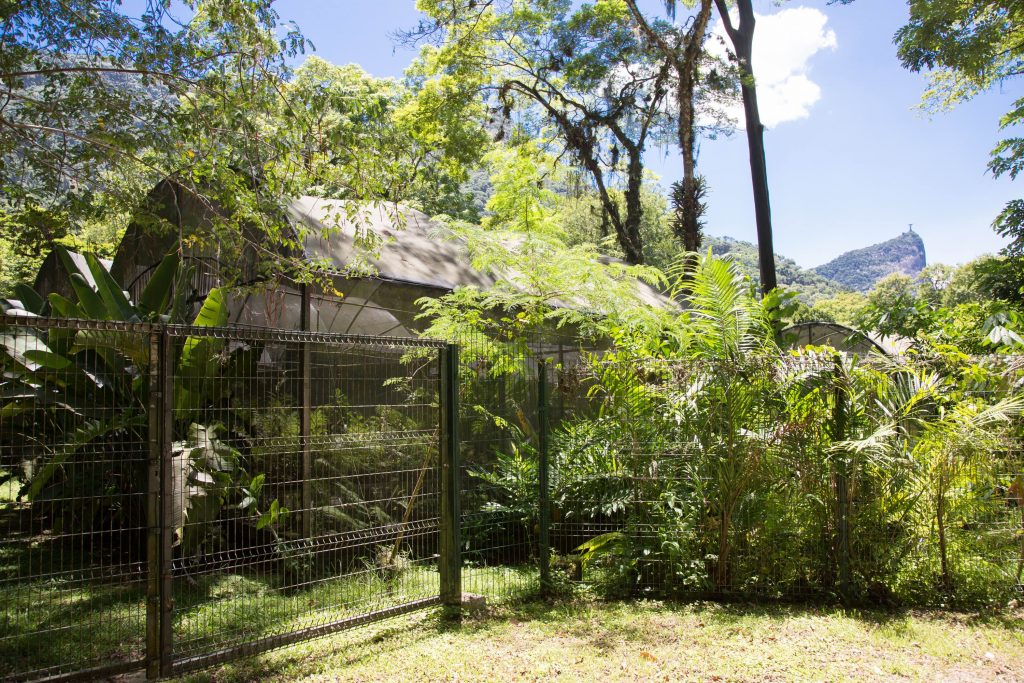
For the original article by Anne Vigna in Portuguese published in Agência Pública click here.
Labeled ‘invaders,’ 2000 people that live in Horto Florestal are threatened with eviction after the Botanical Gardens took control of the land
It is one of the most beautiful and preserved places in Rio de Janeiro: a small green paradise, between the Botanical Gardens and Tijuca National Park, in one of the most prized areas of the city, which includes the neighborhoods of Jardim Botânico and Gávea. The piece in question is called the Horto Florestal community. It has 2000 residents, small houses–some of them listed by the Institute of National Historic and Artistic Heritage (Iphan)–and many trees, giant bamboos, waterfalls, trails, wild animals. A neighborhood that makes us forget that we are in the middle of a large metropolis.
“It’s always been a wonderful place here,” says Mrs. Olivia da Silva Alves, who arrived here in 1945, when her father, an employee of the Itatiaia National Park, was brought by the Brazilian Forest Service to work in the Botanical Gardens. The house is simple, single-story, where she lives with her daughter and her grandson. Next to it, another set of houses, old and white, forms the little street. “It used to be very good to live here, but it was also difficult because it was just a forest. It had neither a road nor electricity, but it was very quiet. And no one was going to mess with us,” she adds. Thirty years ago the situation changed. Since the 1990s, the administration of the Botanical Gardens–the historic garden created by Portugal’s John VI in the 19th century–claimed community lands to expand its activities.
Finally, on November 3, the Botanical Garden Research Institute received a grant from the Union’s Patrimony Secretariat (SPU) for “full control” of the lands of both the Botanical Garden and Horto Florestal, estimated at 142 hectares. The SPU thus obeys the most recent judicial decision for the case, tried by the Federal Court of Accounts (TCU) in 2012 at the request of the Association of Residents and Friends of the Botanical Gardens (AMAJB).
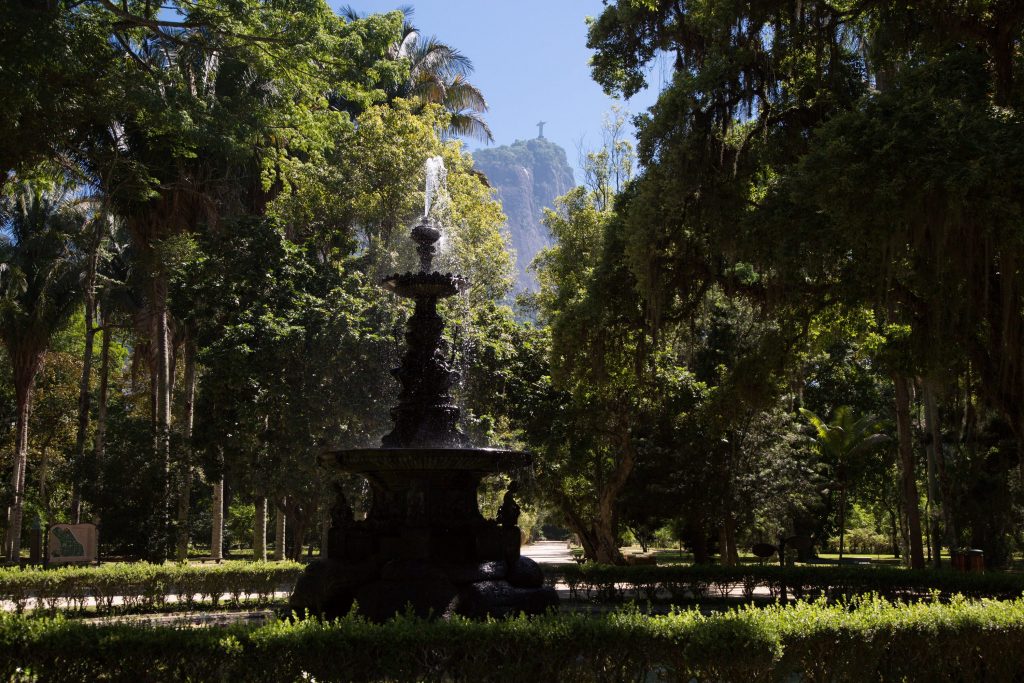
In their judgment, the TCU ministers did not consider the central argument of the community–their long history on those lands–to request they stay. On the contrary: all the ministers considered the inhabitants as “invaders,” without specifying the date of such invasion. “Today, the Botanical Gardens’ land is occupied by more than 2000 people,” said Minister Walton Alencar Rodrigues, who demanded to “remove these people” from there.
The current director of the Botanical Gardens, Sérgio Besserman, also follows this line: “We did not expand,” he says about the TCU decision. “The community’s land was already considered part of the Botanical Gardens even by the community itself.”
Historian Laura Olivieri disputes this view. “You cannot say that the locals are invaders of the park, because they aren’t. This wasn’t a park here,” she says. Within Horto, she found the ruins of one of Rio’s first sugar mills, founded in 1578, more than 200 years before the Botanical Gardens itself.
“The first wave of occupation was of slaves and Portuguese. Where there was a sugar mill, there was slave labor, probably indigenous as well, but very little is known. Then, in the 18th century, Horto was home to a coffee farm, also with slave labor. The foundation of the Botanical Gardens Park brought the third population wave to the region, made up of slave laborers from that large project,” comments the historian.
Horto Florestal [which would translate as ‘forest orchard’] was officially given this name for the first time in 1875, as an organ linked to Brazil’s Forests Society and subordinated to the Ministry of Planning. Throughout the 20th century, Horto was the essential site of Brazilian forestry, where forest species were produced and experiments were carried out with them. A map from 1929 presents its perimeter at 83.3 hectares of land and a well-demarcated boundary with 54 hectares belonging to the Botanical Gardens. Inside, there were 25 hectares of crops that included 180 medicinal plants. “The state abandoned this sector in the 1980s, companies began to finance research and public investments stopped,” explains Clayton Ferreira Lino, president of Unesco’s National Council of the Atlantic Forest Biosphere Reserve. He adds: “Rio’s Horto Florestal was special, being in the capital, with more resources, it had more native forest and medicinal plants. All Brazilian horticultural gardens had and have inhabitants and dwellings inside them. They still have nurseries and trained people.”
Together with the Botanical Gardens and the Tijuca National Park, Horto was registered in 1991 as a Unesco Biosphere Reserve within the Man and Biosphere Program. “We imagined this reserve as a set of three entities, because each had particular characteristics and components. Horto Florestal has historicity, the development of forestry and a fundamental role in the training of researchers. The Botanical Garden has the Atlantic forest and exotic species, and Tijuca Park has native and replanted forest,” explains Ferreira Lino.
According to him, Unesco has never considered the community to be a problem. On the contrary: “The reserve already thinks of man within nature, and therefore is called ‘Man and Biosphere.’ The community at Horto has lived there for a long time, one should consider the residents. Undoubtedly there are remnants of slavery in Horto, there are dominant ties with descendants. They are not invaders, nor in bad faith,” concludes the expert.
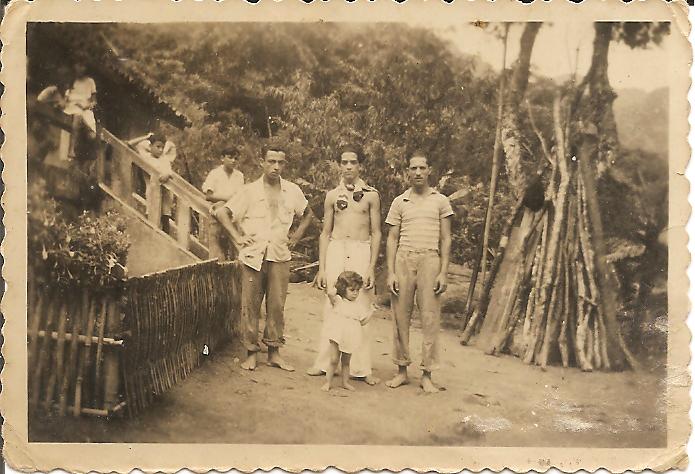
Conflict for land in the middle of the Carioca forest
Until 2006, the federal government also didn’t consider the community to be an “invasion.” In that year, the SPU commissioned the Housing Laboratory at the Faculty of Architecture and Urbanism of Rio’s Federal University (FAU / UFRJ) to carry out a land regularization project in the social interest, which should consider the community’s needs, but also consider an old 1990s lawsuit from the Botanical Gardens to expand its land.
In those years, the Botanical Gardens became a research institute and took possession of the Solar da Imperatriz, the master’s house of the old coffee farm, to found the National School of Botany. Little by little, it deployed several nurseries around the site and also inside a club that had been built by the community in the 1950s, where locals played soccer.
They were the first claims in this land dispute that erupted in middle of the forest.
Since then, the community’s lawyer Rafael da Mota Mendonça explains that “the Botanical Gardens messes with community life by placing large dumpsters in front of residents’ homes, which prevents them from repairing their homes or using cars.” At the same time, the Institute started asking the federal government to expand its land for further research.
The arguments were considered valid by the SPU in 2006. “The project that SPU entrusted us with was to regularize both the community and the Botanical Gardens, define the boundaries between one and the other, allow the expansion of the Gardens alongside a set of urban centers, some of them being relocated due to their location in a risk zone, such as the river’s edge,” explains urban planner and professor Ubiratan de Souza, who conceived the plan.
The project proposed an expansion of the Botanical Gardens to 80% of the 142 hectares, and at the same time, the regularization of the community on 8% of the land. The Horto community area, which is 19.3 hectares today, would be reduced to 11.1 hectares, and the neighborhood would be denser. And the Botanical Gardens, which in 2006 was 54 hectares, would be 113 hectares.
The rest of the area is occupied by other facilities from public and private companies, such as the State Water and Sewage Company (CEDAE), the Federal Data Processing Service (Serpro) and the electric utility Light.
However, this project didn’t please the Association of Residents and Friends of the Botanical Gardens, who decided to take the case to the TCU. This court, in turn, determined “the immediate suspension of the land regularization program” in 2012.
Opposing View
In this dispute, the two sides have an opposing view on the right that should prevail. The community is entitled to the right to housing, contemplated by the 1988 Constitution and the 2011 Statute of Cities.
“All legislation passed in the 1990s took into account the need to bring informal settlements into formality. In the Constitution, there’s a chapter on urban policies, an instrument called a special use concession for the purpose of housing, for private occupants of public areas,” said Rafael Mendonça, the community’s lawyer.
The other side, on the other hand, affirms that there’s no right to housing on government soil. There are, however, a number of environmental rights that must prevail.
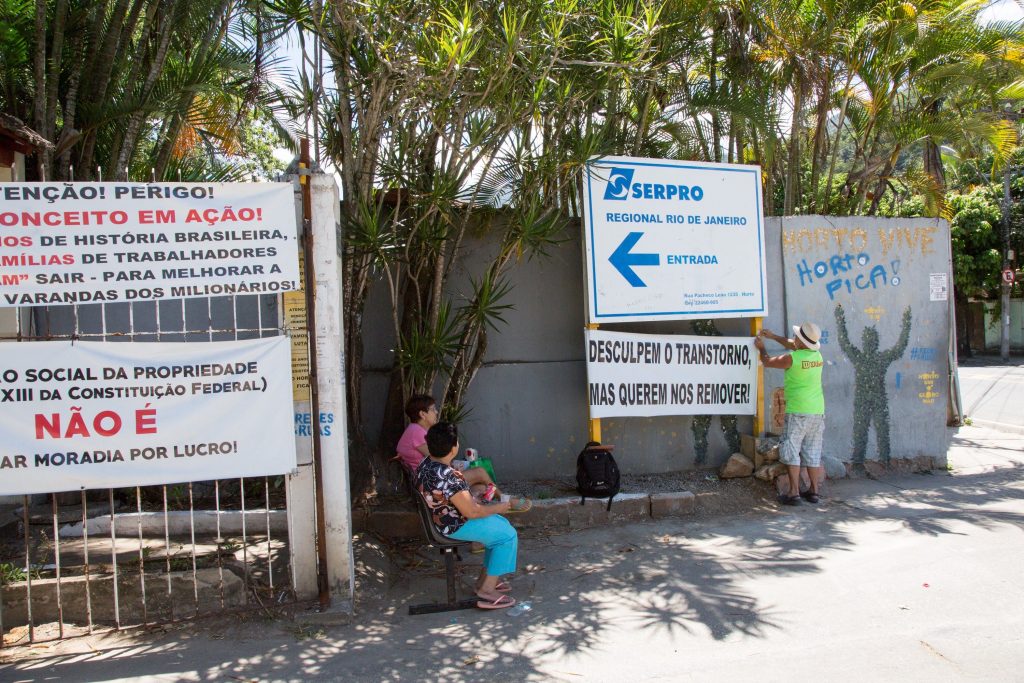
The director of the Botanical Gardens, Sérgio Besserman says that environmental work is a priority, and Horto needs to expand it. “We are responsible, for example, for species threatened with extinction. We need trees, seedlings, seeds, otherwise the world’s largest forest restoration will be done without biodiversity.”
This was also the interpretation of the TCU. According to the ministers, the Botanical Gardens is a World Heritage Site. “Invasions occur every day in the country as if it were something normal. It is not possible for Brazil to continue to pass on to the world this impression that there is no law here, that laws are not obeyed, and that anyone can just settle anywhere and government will provide as a gift a house with all the facilities necessary for their proper survival,” argued Minister Aroldo Cedraz.
For Sérgio Besserman it is also unimaginable that the community remains there: “Do the Botanical Gardens of Paris have people living inside them? Does Kings Garden in London have people living in it? It is not compatible with the operation of a research institution and a visitor center.”
According to him, the expansion cannot happen by keeping the community there, as proposed by the UFRJ study: “In this community, as in all communities in Rio, there is organized crime, drug trafficking,” he says. The same argument was used by Besserman’s predecessor, Samyra Crespo, in an interview with Pública: “There is drug trafficking and militia,” she said, explaining that the presence of the residents would bring insecurity.
However, the accusation was not verified by our investigation. Serpro and Light officials say they have never seen any illegality and feel safe there. “I’ve been working for Serpro for 20 years and I’ve never heard of violence, I’ve never seen anyone with a gun here. And I know what I’m saying because I live in Rocinha,” says a lady. Then she takes us to talk to the guards in the company parking lot. “People here leave their cars open. You can walk quietly, there are no drug traffickers or police here,” the guards said.
“This talk of drug trafficking in the community ties really well into the common perception that everyone buys into. They say, ‘I’ll remove them because there are criminals.’ It’s a common practice of public administrators to criminalize social movements,” says lawyer Rafael Mendonça.
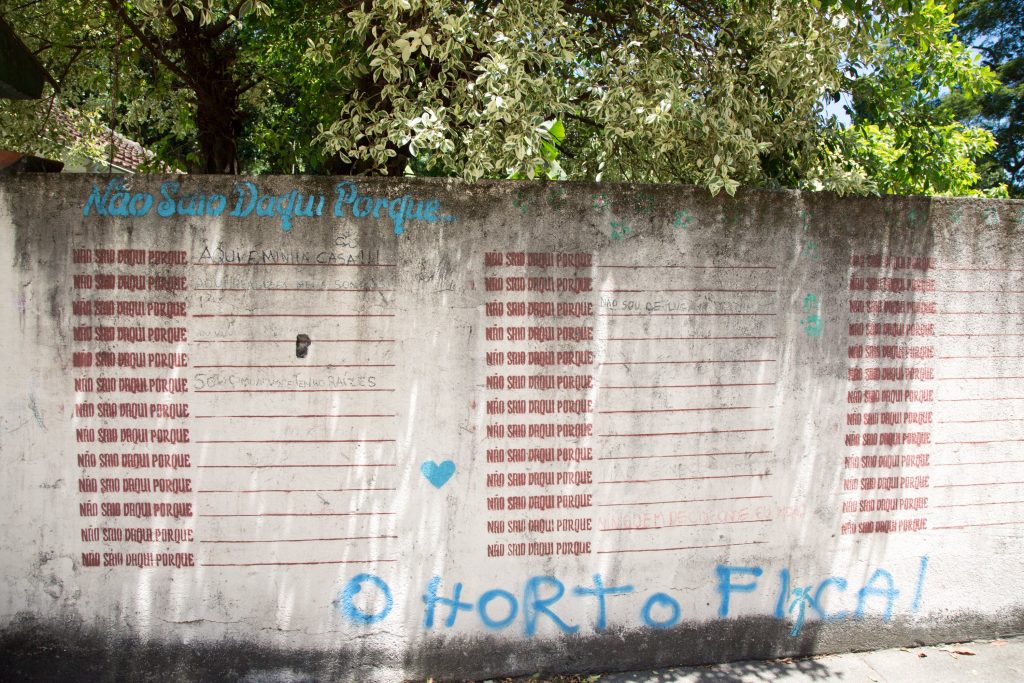
The two directors are also concerned about a possible expansion of the community. Sérgio Besserman says the residents “have real estate interests” and intend to sell their houses. “What guarantee would there be that the community will not grow?” he asks.
Urbanist Ubiratan de Souza responds: “We did the regularization project precluding all expansion. In the very few houses that have unoccupied areas within their lots, we put three families instead of one. The rest of the community is comprised of continuous urban nuclei, there’s no free space. So I can guarantee that with the project the community will not grow.”
Threat of eviction
There are at least 215 repossession actions in the Horto community that have already been tried in court and can be carried out at any time. In one of them, on November 7, Marcelo de Souza’s family lost their home.
Employees of the Botanical Gardens, Marcelo’s grandparents went to live in Horto in the 1950s.
Although the family has lived there for 70 years, Marcelo was suddenly delivered with the repossession notice in February 2016 while he was painting his son’s bedroom. Six months later, on November 7, police from four battalions arrived to take their home; the community reacted by setting up barricades. “I had my heart in my hand,” he says. Someone also sent a moving truck. So far–four months later–this was the only help the family received.
Marcelo, his wife and children locked themselves in the house. Supporters and lawyers arrived. “The police were going to throw tear gas inside. I stopped everything, accepted and left. The same day, my house was destroyed.” The remains were left. With his wife, he stayed for two months with relatives in the Rio Comprido neighborhood, five miles away. His son stayed with friends to finish the school year.
Since January 15, the family has rented a small apartment for R$1,700–Rio de Janeiro has the most expensive square meter in Brazil. “In Rio Comprido, there was a lot of gunfire, we’re not used to it,” he says. Asked if there was any drug trafficking in Horto, he laughs. “There’s nothing like that. Go there now to find a joint, see if someone will sell it to you,” he challenges.
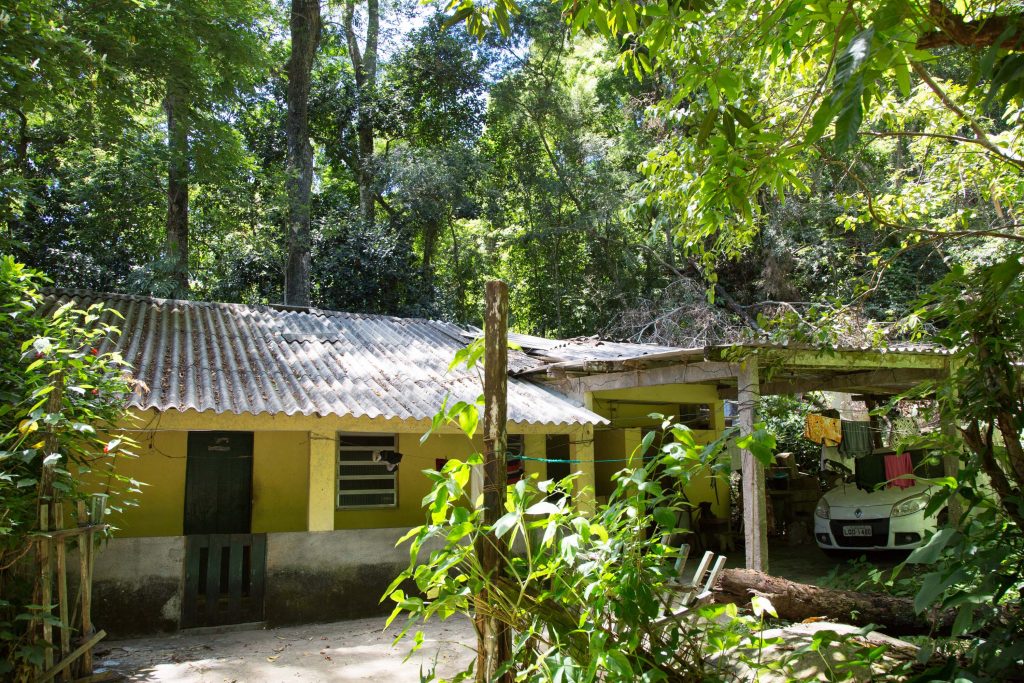
Marcelo is a microentrepreneur–he has a buffet company with his wife–and an Uber driver. Now he expects at least some compensation for the house that was built by his grandparents more than half a century ago.
Since the last repossession, the community has set up a “guardhouse” itself: residents are vigilant to avoid the police coming in. There are some tires lined up and tree trunks crossing the street.
The sight is a strange one in the middle of a forest. Emerson de Souza, president of the Horto Residents’ Association, says the measures are “necessary because we have to resist, even if we are open to dialogue.”
Dialogue is what is missing today, explains Clayton Lino from Unesco: “We have offered our mediation services in this conflict, because we have a lot of experience dealing with communities within national parks,” he explains. “In the case of Horto in Rio, we had a good dialogue until the TCU decision. Our last meeting with then-director Samyra Crespo and former Environment Minister Izabella Teixeira was very rigid. The stance was ‘we’re going to remove everyone, period.’ To have dialogue, you have to change this attitude and recognize the true history of the residents,” he says.
In addition to the lack of dialogue with the federal government, the community criticizes the Botanical Gardens’ current administration. “Most of the workers in the park are outsourced, while in Horto people know a lot about botany and ecology,” says Emerson.
They also complain about what they call commercial practices within the Gardens, such as creating musical spaces, restaurants, parking lots. Emilia Souza, Emerson’s aunt, criticizes the “presence of companies that have nothing to do with research and conservation:” “Ten years ago, two former employee homes were taken by the Botanical Gardens. One became the headquarters of the Association of Residents and Friends of the Botanical Gardens and the other became the changing room for the Espaço Tom Jobim,” says Emília–referring to the park’s concert space. “Nothing to do with conservation and planting. So we doubt the real projects of the Botanical Gardens, which has never presented any plan saying what they’re going to do with the community’s lands.”
In the Diário Oficial, the amount of land that will be administered by the Institute was estimated at R$10.5 billion.
Here worked and lived slaves
Official documents show details of the slaves who built the Botanical Gardens and the fact that they also lived there. The law from October 24, 1832, which budgeted the revenue and expenditure of the Empire, appropriated funds for the Botanical Gardens, including the expenses of its slaves: “60 slaves of both sexes who received daily payments lived in buildings on the land in front of the residence of the Gardens’ director, and had family gardens.”
In 1844, a report from the Botanical Gardens noted the number of slaves employed: 33 slaves older than 7 years, and 32 under 7, some newborns; 5 freed slaves and 26 deceased. In 1853, then-director of the Gardens, Cândido Baptista de Oliveira, defended in a report presented to the Legislative General Assembly of the Empire “the need to provide, besides sustenance and clothing, a small pecuniary remuneration to the 67 slaves plus 7 free ones that provided services there.”
[pdfviewer]https://www.rioonwatch.org/wp-content/uploads/2017/04/Relacao-escravos-JB-1844.pdf[/pdfviewer]
Report on slaves in the Botanical Gardens
The same document assures that “the slave quarters which have to accommodate most of the slaves who still inhabit the old slave quarters–which must be demolished because they can not be repaired at all–are almost complete.” In 1854, 80 slaves worked for the Botanical Gardens, which at the time was a major agricultural production zone: about 340kg of tea leaves were harvested and straw was grown from the bombonança (plant) for the creation of the so-called Panama hats. In 1869, the association between the Botanical Gardens and the Imperial Institute meant the extinction of slave labor, which was replaced by free laborers.
For Rodrigo Nascimento, former representative of the Palmares Foundation in Rio de Janeiro, linked to the federal government, Horto is “a community that has a very interesting and strong black cultural preservation.” He believes that the Foundation should begin official recognition of this legacy immediately. “Carioca society already recognizes the importance of Horto Florestal as a community with a historical role in the defense of black resistance,” he says.

